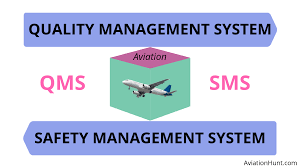Quality, management, and safety are three important aspects that organizations focus on to ensure efficient operations, customer satisfaction, and a safe working environment. Let's explore each of these concepts:
- Quality: Quality refers to the degree of excellence or superiority of a product, service, or process. It involves meeting or exceeding customer expectations and delivering products or services that are reliable, consistent, and meet specified standards. Quality management focuses on implementing processes, systems, and practices to ensure that products or services consistently meet or exceed quality requirements. This includes activities such as quality planning, quality control, quality assurance, and continuous improvement. Organizations often adopt quality management frameworks such as ISO 9001 to establish and maintain a robust quality management system.
- Management: Management encompasses the activities, processes, and practices employed to plan, organize, coordinate, and control an organization's resources and activities to achieve its objectives. Effective management involves setting goals, making informed decisions, allocating resources, and overseeing the implementation of strategies and plans. It includes various functions such as strategic planning, financial management, operations management, human resource management, and risk management. Management ensures that resources are utilized efficiently, processes are optimized, and organizational goals are achieved.
- Safety: Safety refers to the protection of individuals from harm, injury, or hazards in the workplace or in the use of products or services. It involves identifying and mitigating risks, implementing safety protocols and procedures, and promoting a culture of safety within the organization. Occupational health and safety management systems, such as OHSAS 18001 or ISO 45001, provide frameworks for organizations to systematically manage workplace safety and create a safe working environment for employees. Safety considerations include risk assessment, hazard identification, emergency preparedness, training, and compliance with relevant safety regulations.
By integrating quality, management, and safety principles into their operations, organizations can enhance efficiency, customer satisfaction, and employee well-being. These concepts are interconnected and mutually reinforcing. Quality management helps ensure that products or services are delivered consistently and meet customer expectations. Effective management practices enable the organization to plan, allocate resources, and achieve its goals. Safety measures protect employees and stakeholders from hazards and create a secure working environment.
Organizations that prioritize quality, management, and safety can improve their competitiveness, build customer trust, enhance employee morale, and reduce risks and incidents. By implementing appropriate frameworks, processes, and practices, organizations can foster a culture of excellence, operational efficiency, and safety consciousness.
